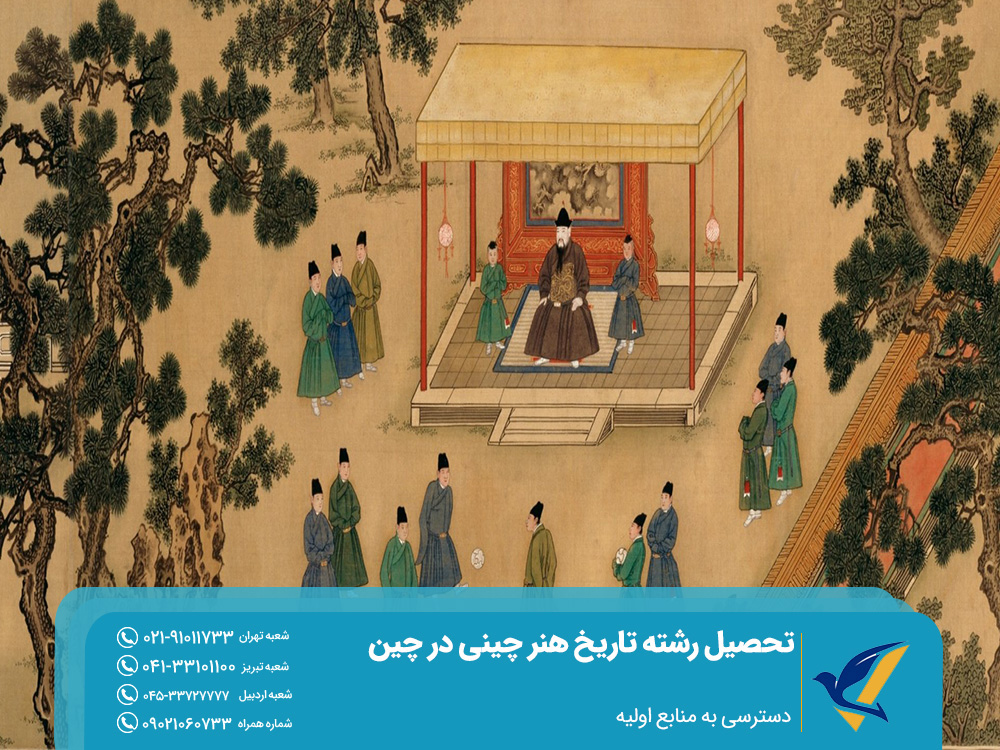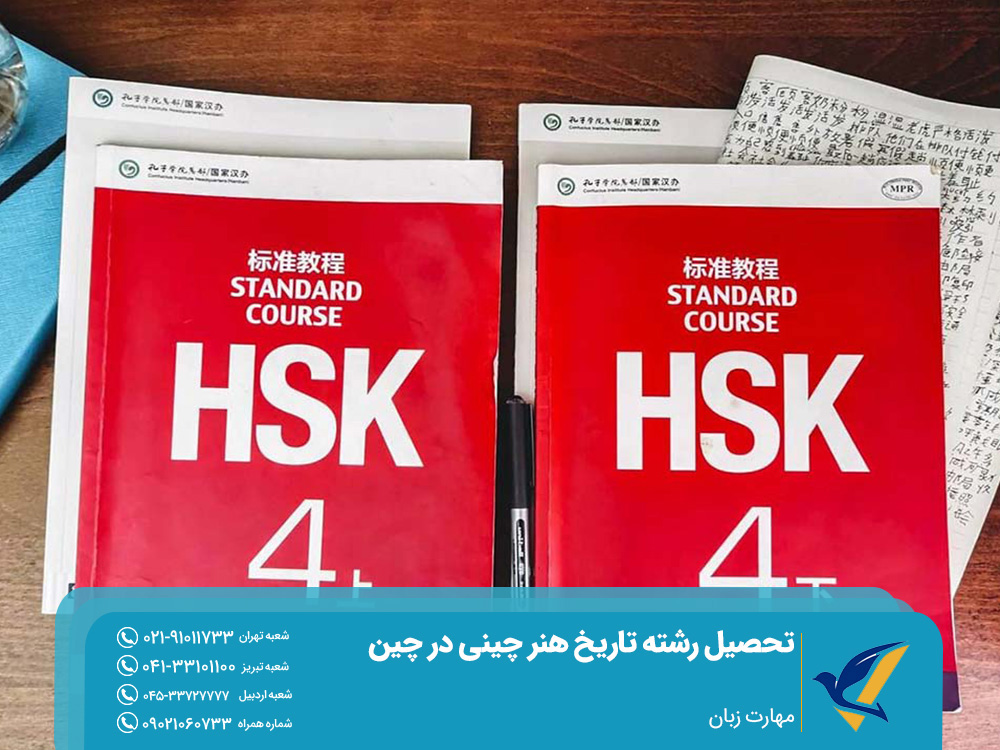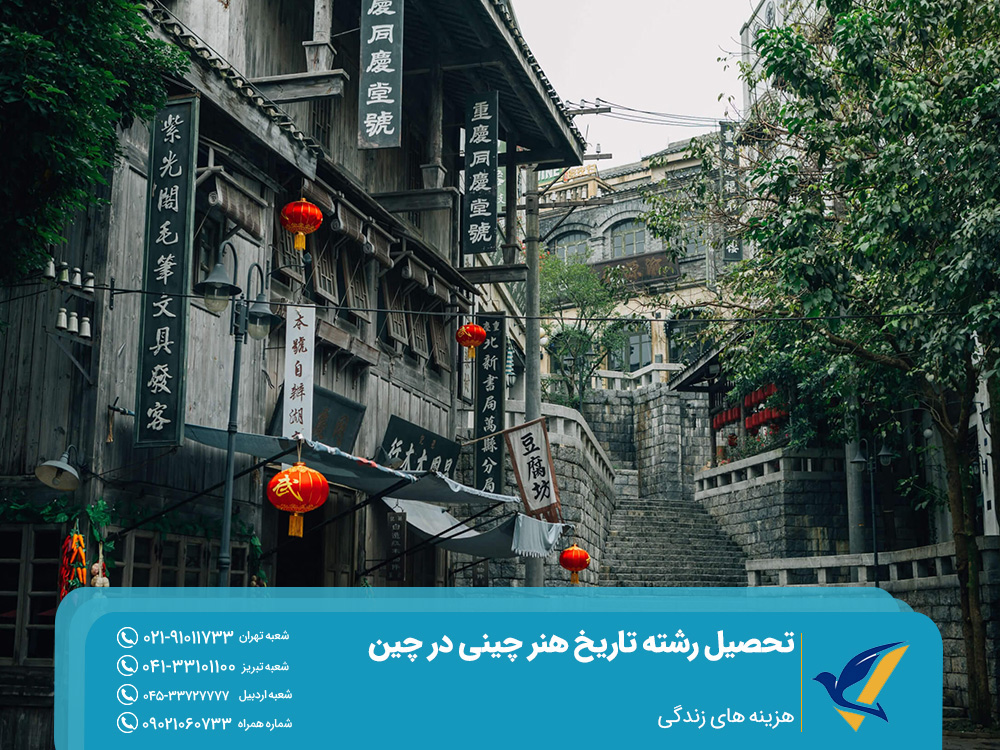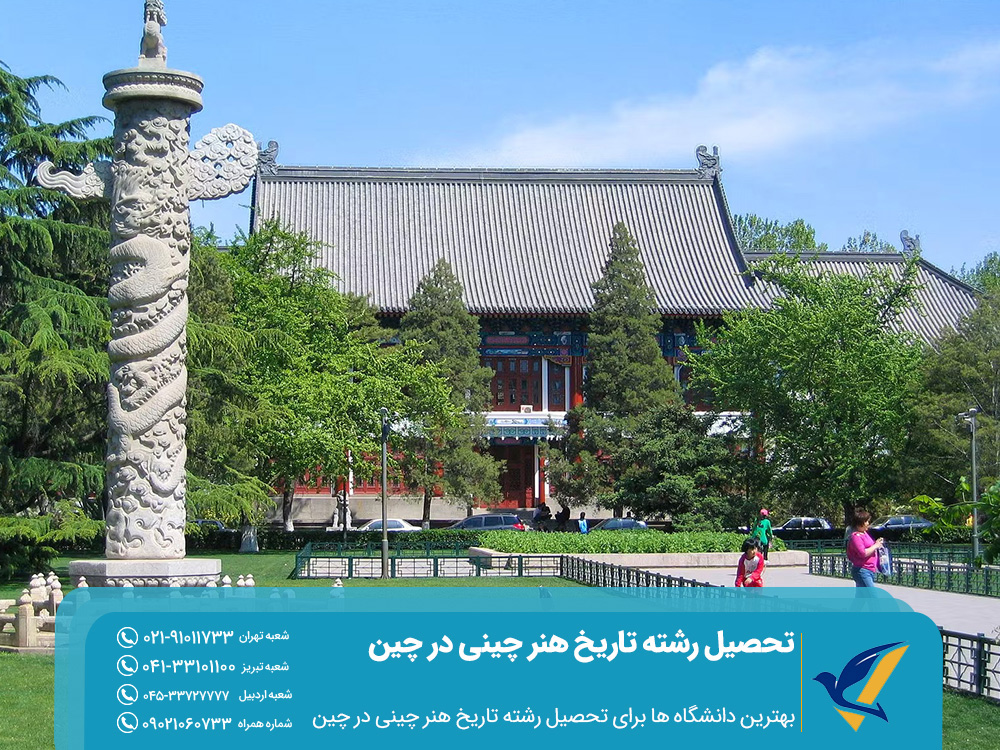Studying Chinese Art History in China is a complex journey shaped by thousands of years of cultural, philosophical, and political evolution. Chinese art, from the ancient bronzes of the Shang Dynasty to contemporary works in Beijing’s 798 Art District, reflects a civilization that continuously redefines aesthetics, spirituality, and social values. The conditions for studying Chinese Art History in China offer students a unique opportunity to engage directly with this rich heritage through museums, historical sites, and living traditions.
Immersing oneself in China’s dynamic academic and cultural environment, where ancient artifacts are paired with unique scholarships, provides a transformative window into one of the world’s most enduring artistic traditions. In this article from the Elm Vira series, we explore the conditions for studying and potential career prospects in Chinese Art History.
Benefits of Studying Chinese Art History in China
Studying Chinese Art History in China offers a unique and comprehensive experience that cannot be replicated in any other country. The opportunity to engage directly with China’s rich artistic heritage, combined with access to unparalleled resources, cultural context, and academic expertise, makes it an ideal destination for researchers and enthusiasts alike. Below, we examine the key advantages of studying Chinese Art History in China.

- Access to Primary Sources
Studying Chinese Art History in China provides direct access to primary sources. Museums such as the Palace Museum in Beijing, the Shanghai Museum, and the Nanjing Museum house extensive collections ranging from ancient jade artifacts and bronze vessels to Tang Dynasty ceramics and Ming Dynasty paintings. Students can examine these works up close, gaining insights into techniques, materials, and historical contexts that are often lost in reproductions or secondary accounts.
Historical sites, such as the Terracotta Army in Xi’an or the Dunhuang Caves, offer a tangible connection to China’s artistic past, allowing students to study art in its original environment. This proximity fosters a deep understanding of how art was created, used, and valued across different dynasties.
- Rich Cultural and Historical Context
Studying Chinese Art History in China immerses students in the country’s rich cultural and historical fabric. Chinese art is often intertwined with philosophy, religion, and politics. For instance, Confucianism, Daoism, and Buddhism have deeply influenced aesthetic principles. Living in China allows students to engage with these cultural foundations through visits to temples, traditional festivals, and contemporary art scenes in cities like Beijing and Shanghai. This immersion helps students understand the symbolic meanings and social functions of artworks, including those produced during the Mao era.
- Provision of Resources and Expertise
Academic institutions provide the resources and expertise necessary for studying Chinese Art History in China. Universities such as Peking University, Tsinghua University, and the China Academy of Art in Hangzhou offer renowned art history programs led by scholars with deep knowledge in the field. These institutions often provide access to rare archives, such as historical texts or inscriptions, and foster collaborations with local museums and galleries.
Additionally, many programs offer courses in Mandarin, enabling students to engage with primary texts and scholarly debates in the original language—a crucial advantage for advanced research.

- Opportunity to Learn Chinese
Another advantage of studying Chinese Art History in China is the opportunity to learn Mandarin. While many universities offer programs in English for international students, studying in China allows for full immersion in the Mandarin language, which is highly beneficial for reading ancient texts, inscriptions, or qualifying for certain scholarships. Language skills also facilitate interactions with artists, museum curators, and local communities, enriching students’ perspectives on both historical and contemporary Chinese art.
- Vibrant Contemporary Art Scene
The vibrant contemporary art scene is another benefit of studying Chinese Art History in China. Cities like Beijing’s 798 Art District and Shanghai’s M50 demonstrate how modern artists reinterpret traditional motifs, creating a dynamic bridge between past and present. Engaging with this living art culture provides students with a comprehensive understanding of China’s artistic evolution.
Conditions for Studying Chinese Art History in China
International students wishing to study Chinese Art History in China must meet specific academic, language, and administrative requirements set by universities and the government. These criteria ensure that applicants are prepared for rigorous academic programs and can adapt to China’s university environment. While requirements vary depending on the university and level of study, the general conditions for pursuing Chinese Art History in China are as follows:
- Academic Requirements
International students must hold a high school diploma or its equivalent to study Chinese Art History in China. Master’s applicants need a bachelor’s degree in a related field, such as Art History, Fine Arts, or Humanities. Doctoral programs require a master’s degree.
A strong academic record is essential for admission. Some universities may request recommendation letters and a statement of purpose to verify the applicant’s academic and research capabilities. For graduate studies, universities may also require a portfolio or research proposal detailing the student’s intended focus, such as Chinese painting or calligraphy.

- Language Proficiency
Studying Chinese Art History in China is often conducted in Mandarin, making proficiency in the language a requirement for admission. Applicants to undergraduate programs in Chinese-taught courses must provide an HSK certificate at least at level 4 or 5. The HSK certificate, valid for two years, demonstrates the student’s ability to understand Chinese texts and engage in academic discussions.
If an applicant does not meet the required Mandarin proficiency, they must complete a one-year preparatory language program before starting their studies. Some universities offer Chinese Art History programs at the graduate level in English. Applicants to these programs need to provide a TOEFL score of at least 90 or an IELTS score of 6.5 or higher for admission.
- Age and Health Requirements for Studying Chinese Art History in China
Applicants must meet specific age and health requirements. For undergraduate studies, the maximum age is 25; for master’s programs, it is 35; and for doctoral programs, 45. Additionally, applicants must be in good physical and mental health, which must be verified through a medical certificate. A clean criminal record is often required for admission and must be officially certified by the Chinese embassy.
- Application Process and Required Documents
Applications for Chinese Art History programs in China are submitted online via the university’s platform or the CUCAS website. Students must submit their applications along with the required documents within the deadlines set by the university. Common documents needed for admission include:
- Valid passport
- Academic diploma
- Language proficiency certificate (Mandarin or English)
- Recommendation letters
- Statement of purpose
- Application fee (approximately 800 CNY)
- Proof of financial support
- Medical certificate, etc.
Meeting these requirements allows international students to access China’s rich resources in art history—from ancient artifacts to scholarship opportunities—and gain a deep understanding of this dynamic field.
Tuition and Costs for Studying Chinese Art History in China
The cost of studying Chinese Art History in China for international students varies depending on the university, level of study, city, and lifestyle. While China offers relatively affordable education compared to Western countries, total costs include tuition fees, accommodation, living expenses, and additional costs. Understanding these expenses is essential for planning a comprehensive and enriching study experience in China. The following section examines the tuition and living costs for studying Chinese Art History in China.

1. هزینه تحصیل
هزینه تحصیل رشته تاریخ هنر چینی در چین به نوع دانشگاه و مقطع تحصیلی بستگی دارد. هزینه تحصیل در چین در مقطع کارشناسی، از 2000 الی 4000 دلار در دانشگاههای دولتی مانند دانشگاه پکن یا آکادمی هنر چین متغیر است. برنامههای تحصیلات تکمیلی (کارشناسی ارشد و دکتری) از 3000 الی 5000 دلار در سال هزینه دارند.
Elite institutions or specialized programs may charge higher tuition fees, reaching up to $6,000 per year. Programs offered in English typically have higher tuition costs compared to those taught in Chinese. Some universities also require an application fee (ranging from $100 to $150) and may include additional charges for entrance exams or interviews.
- Accommodation
University dormitories are the most affordable accommodation option for international students, with costs ranging from $500 to $1,500 per year, depending on the city and available facilities. Dormitories in major cities such as Beijing and Shanghai tend to be more expensive, while smaller cities usually offer lower rates. Renting an apartment off-campus in large cities can cost between $300 and $800 per month.
Most universities provide on-campus housing for international students, simplifying the accommodation process and ensuring a convenient living environment during their studies.

- Living Expenses
Students interested in studying Chinese Art History in China should also consider the cost of living, which varies depending on location and lifestyle. Those studying in major cities such as Beijing or Shanghai should expect to spend between $500 and $800 per month on transportation, food, and personal expenses. University cafeterias offer healthy and affordable meals priced between $1 and $3. Additionally, health insurance, which is mandatory for international students, typically costs $100 to $150 per year.
- Additional Expenses
Extra costs such as textbooks, art supplies, and field trips may range from $200 to $500 per year. If a preparatory language course is required, tuition can cost between $2,000 and $4,000 per year. The student visa (X1 or X2) fee varies by country and generally ranges from $50 to $150.
- Income in Chinese Art History
After completing a degree in Chinese Art History, international graduates can expect varying income levels depending on their experience, job position, and location. Entry-level positions such as museum assistants or gallery curators in smaller cities typically earn between 3,000 and 6,000 CNY per month (approximately $420–$840). Academic roles, including university lecturers, can earn between 6,000 and 10,000 CNY (around $840–$1,400) per month, while senior professors may earn up to 20,000 CNY (about $2,800) monthly.
The job market is competitive, and graduates in fine arts often face lower average salaries due to market oversaturation, earning around 5,590 CNY (roughly $840) per month. However, advanced degrees and positions in high-demand fields such as cultural heritage management can lead to significantly higher salaries.

Top Universities for Studying Chinese Art History in China
China hosts world-class universities that offer exceptional programs in Chinese Art History, combining rigorous academic training with access to unparalleled cultural resources. These institutions provide immersive environments where students can engage directly with ancient artifacts, traditional techniques, and contemporary art scenes. Programs often emphasize the artistic evolution of China, from Shang dynasty bronzes to modern installations, and typically include fieldwork in museums and historical sites. Leading universities feature distinguished faculty and researchers, providing access to rare archives and materials.
Many of these programs are conducted in Mandarin, encouraging students to develop language proficiency as part of their academic journey. These universities are located in culturally rich cities such as Beijing, Hangzhou, and Shanghai, combining academic excellence with proximity to historical landmarks. Some of the top universities for studying Chinese Art History in China include:
- Peking University
- Tsinghua University
- Nanjing University
- Shanghai Jiao Tong University
- Huazhong University, and others
Conclusion
Studying Chinese Art History in China combines direct access to ancient artifacts, cultural immersion, academic expertise, language learning, and engagement with contemporary art trends. This comprehensive experience equips students with a profound understanding of one of the world’s most influential artistic traditions, making China an ideal destination for such studies.
The academic environment, combined with direct interaction with iconic artifacts, reputable university programs, and vibrant cultural settings, fosters a deep understanding of the role of art in shaping Chinese identity.
In this article, we have provided a detailed overview of the study conditions and potential income opportunities in Chinese Art History. With hundreds of successful educational migration cases, Elm Vira is your trusted partner in navigating this intricate journey. For more information and free consultation, feel free to contact us.
میانگین امتیازات 5 از 5
Vote count: 1 Vote